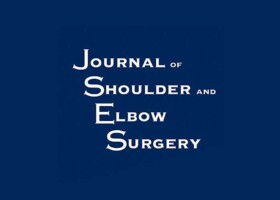
Authors:
Rony-Orijit Dey Hazra, MD, Maria E. Dey Hazra, MD, Jared A. Hanson, MD, Joan C. Rutledge, BS, Marilee P. Horan, MPH, Marco-Christopher Rupp, MD, and Peter J. Millett, MD, MSc
Abstract:
Background
Although short-term results are promising, there are limited data for long-term results of arthroscopic subscapularis (SSC) repair. The purpose of this study is to report minimum 10-year outcomes of primary arthroscopic repair of isolated partial or full-thickness tears of the upper third of the SSC tendon.
Methods
Patients who underwent arthroscopic repair of isolated upper third SSC tears, Lafosse type I (>50% of tendon thickness) or type II were included. Surgeries were performed by a single surgeon between November 2005 and August 2011. Patient-reported outcome measures were prospectively collected and retrospectively reviewed at minimum follow-up of 10 years. Patient-reported outcomes utilized included the American Shoulder and Elbow Surgeons score, Single Assessment Numeric Evaluation score (SANE), Quick Disabilities of the Arm, Shoulder and Hand score (QuickDASH), the Short Form 12 physical component summary, return to activity, and patient satisfaction. A subanalysis of patient age and outcomes was performed. Retears, revision surgeries, and surgical complications were recorded.
Results
In total, 29 patients with isolated upper third SSC repairs were identified. After application of exclusion criteria, 14 patients were included in the final analysis. Follow-up could be obtained from 11 patients. The mean age at surgery was 52.7 years (range: 36-72) and the mean follow-up was 12 years (range 10-15 years). The American Shoulder and Elbow Surgeons score improved from 52.9 ± 21.8 preoperatively to 92.2 ± 13.7 postoperatively (P < .001). Regarding the SANE and QuickDASH scores, only postoperative data were available. Mean postoperative SANE, QuickDASH, and Short Form 12 physical component summary scores were 90.27 ± 10.5, 14.6 ± 15.5, and 49.2 ± 6.6, respectively. Median patient satisfaction was 10 (range 6-10). Patients reported improvements in sleep, activities of daily living, and sports. There was no correlation between patient age and clinical outcome (P > .05). No patients underwent revision surgery for a SSC retear.
Conclusion
Arthroscopic repair of upper third SSC tendon tears leads to improved clinical scores and high patient satisfaction at minimum 10-year follow-up. The procedure is durable, with no failures in the presented cohort.
For the complete study: Patient-reported outcomes of arthroscopic repair for partial or full-thickness upper third subscapularis tendon tears with open sub-pectoral biceps tenodesis: minimum 10-year outcomes
